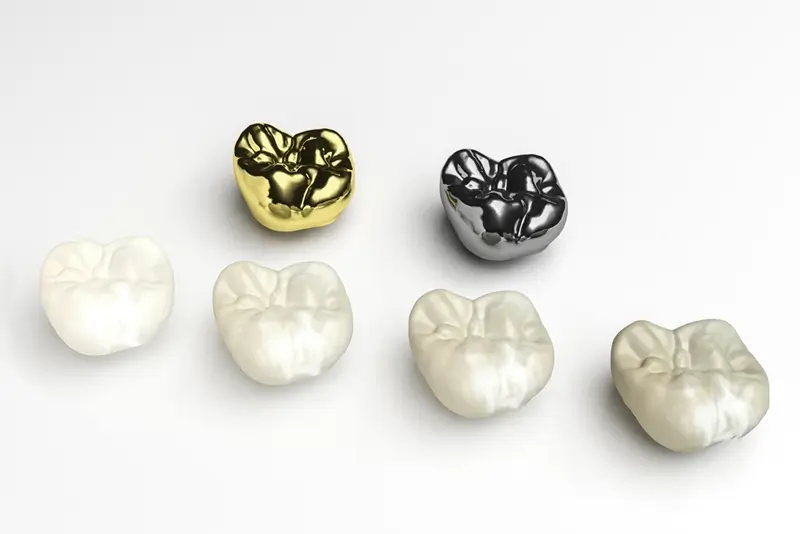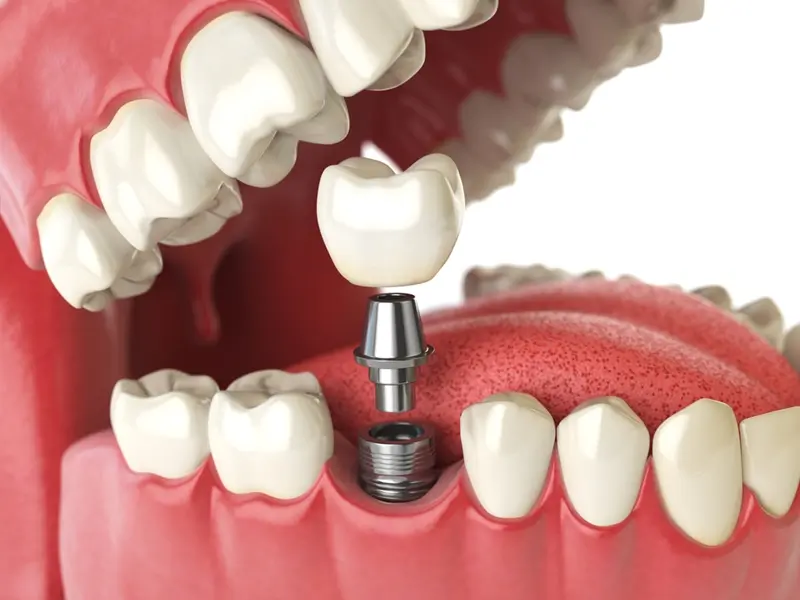When you're experiencing pain, lose a tooth or think you may have a cavity, there are lots of potential causes. Fortunately, there are equally as many solutions by visiting your dentist. One of which is a crown. This restorative treatment may be the best option to address signs of serious decay, a cracked tooth or for esthetic purposes such as discolouration.
However, it's possible that your dental situation may not necessitate such a treatment. You may be better off with something called an onlay. Understanding what an onlay is – and how it differs from a crown – can help you determine the best treatment for you and why your dentist may recommend one over the other.
What is an onlay?
Less invasive than a crown, an onlay is a covering that – as its description more or less implies – fits "on" or at the very top of your problematic tooth. Unlike a crown, which replaces almost the entire tooth – an onlay is a repair that is customised and constructed prior to placement so that it fits snuggly as a single piece on the cusp of the tooth. Usually, an onlay only covers one cusp, which has a cone-like shape to it, but they can cover more than one if necessary. This naturally determines the size and shape of the onlay so it aligns with your bite.

Another alternative to crowns is an inlay. Similar to an onlay, in that it is fabricated as a single piece, an inlay is narrower and is situated inside of a tooth when a regular filling may be insufficient. The best way to distinguish between an onlay and an inlay is placement. While an onlay fits around a cusp, an inlay is typically positioned in between the cusps.
What are onlays made of?
Like crowns, onlays can be made from a variety of materials, but they usually come in gold and porcelain. Your dentist will explain to you some of the factors to keep in mind when choosing between the two, but generally speaking, porcelain is often chosen because the colour resembles that of your natural teeth. However, there may be functional reasons that make gold a better alternative.
How do you know whether an onlay is preferable to a crown?
To answer this question, it's helpful to know the various situations in which a crown is required. They include, but aren't limited to, the following scenarios:
- To protect a structurally weak tooth from breaking or cracking;
- To hold a dental bridge in place;
- To cover a dental implant;
- To improve the appearance of teeth that show severe signs of discoloration;
- To restore a tooth where there's been nerve damage;
- To replace a tooth that's been knocked out (common among athletes).

In short, crowns are often required for more serious oral health problems that require whole-scale replacement and less invasive treatment won't suffice. In situations of even greater significance, an implant may be required, wherein the implant is fused to the jawbone, then a crown or cap is formed around it. An implant is typically inserted surgically when tooth damage has past a point of no return or where no tooth exists. Generally, implants can last 30 years or more and function just like they're regular teeth.
If at all possible, your dentist will go with an onlay over a crown because the process is much less involved and onlays can function just as effectively as crowns do. Here are a few examples in which an onlay may be the better option:
- There's less decay to remove than with a crown, thus preserving the tooth's original structure and curvature;
- Only one cusp requires fixing, as opposed to several that a crown addresses;
- Formation of the decay is slightly more longitudinal (east to west) versus latitudinal (north to south);
- A tooth is in need of repair rather than replacement;
How does a filling differ from an inlay?
Under the same umbrella as onlays, inlays and crowns are fillings. Frequently, fillings are misconstrued with inlays, mainly because they serve the same purpose by replacing decay. They're also frequently made up of the same material, such as amalgam, gold or silver.
The biggest distinction between an inlay and a filling is its extent or the size of the cavity. Generally speaking, fillings are reserved for decay that hasn't gotten too deep into the interior of the tooth. It's also more of a material that's "filled in" and slowly hardens, whereas an inlay is cemented in place and stats out as a single, solid piece.
At City Dentists, we know that no two smiles are the same. That is why we customise our treatments so they're specifically designed for your situation and what best works for you and the assurance of your oral health. Contact us to schedule a comprehensive exam today.
